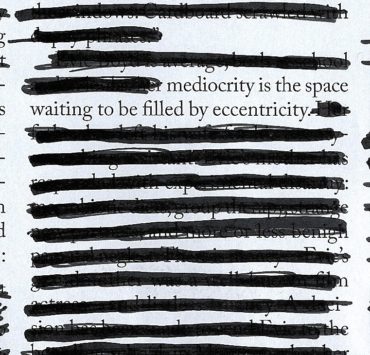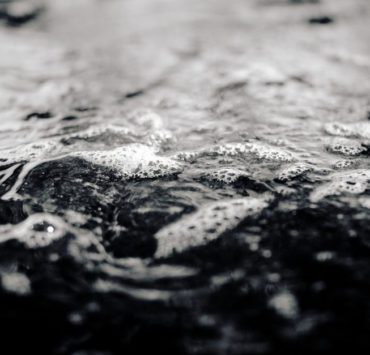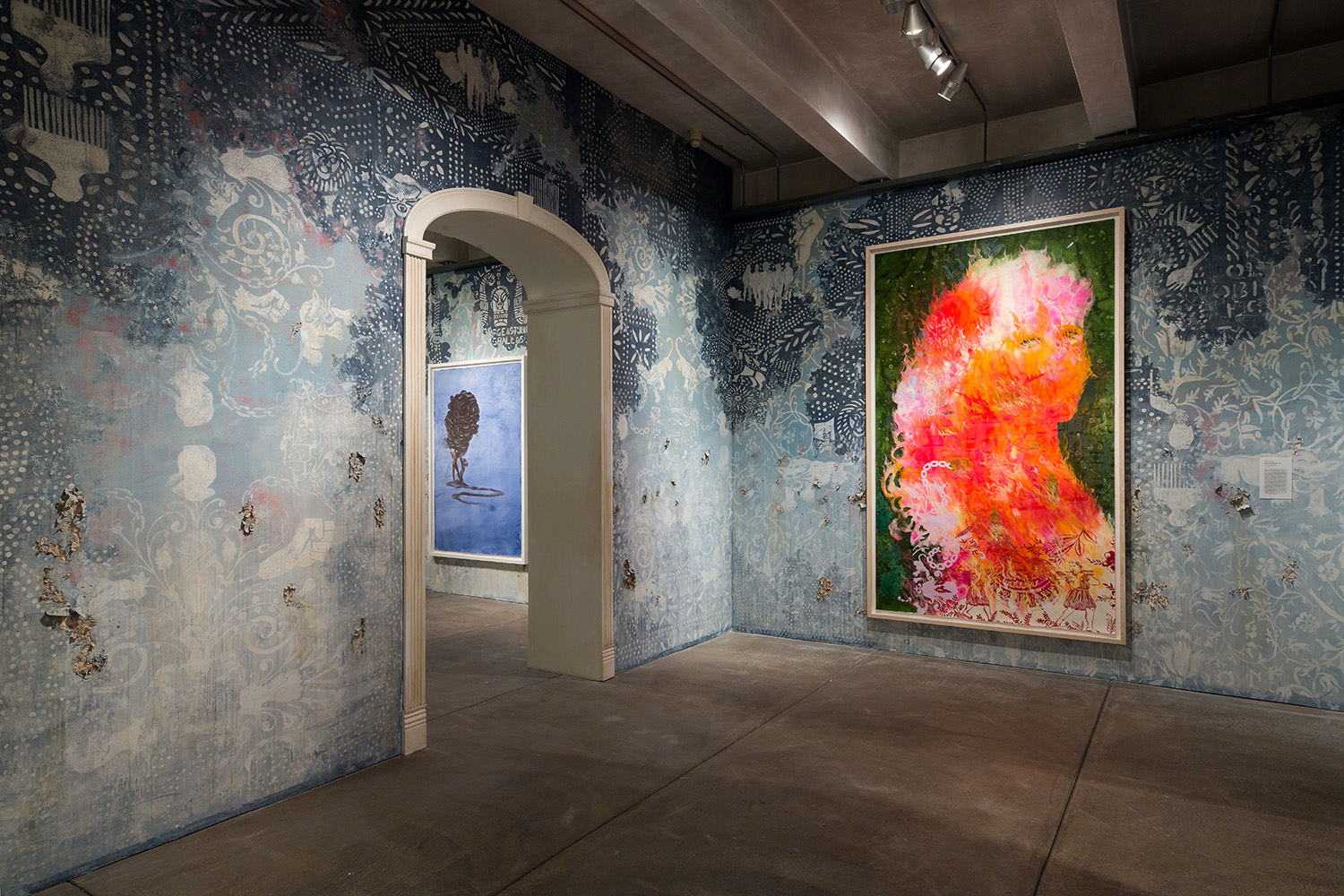
I met Firelei Báez at The Andy Warhol Museum for over an hour. She was taking a short break from installing her one-woman show Firelei Báez: Bloodlines. That day, high school students had been recruited to help her paint the walls, built especially for the show. Jessica Beck, the curator, had been painting alongside Firelei. The spirit and energy around the show reminded me of my Dominican family back home, when something had to get done, everyone rolled their sleeves and just got to work. The following is our conversation.
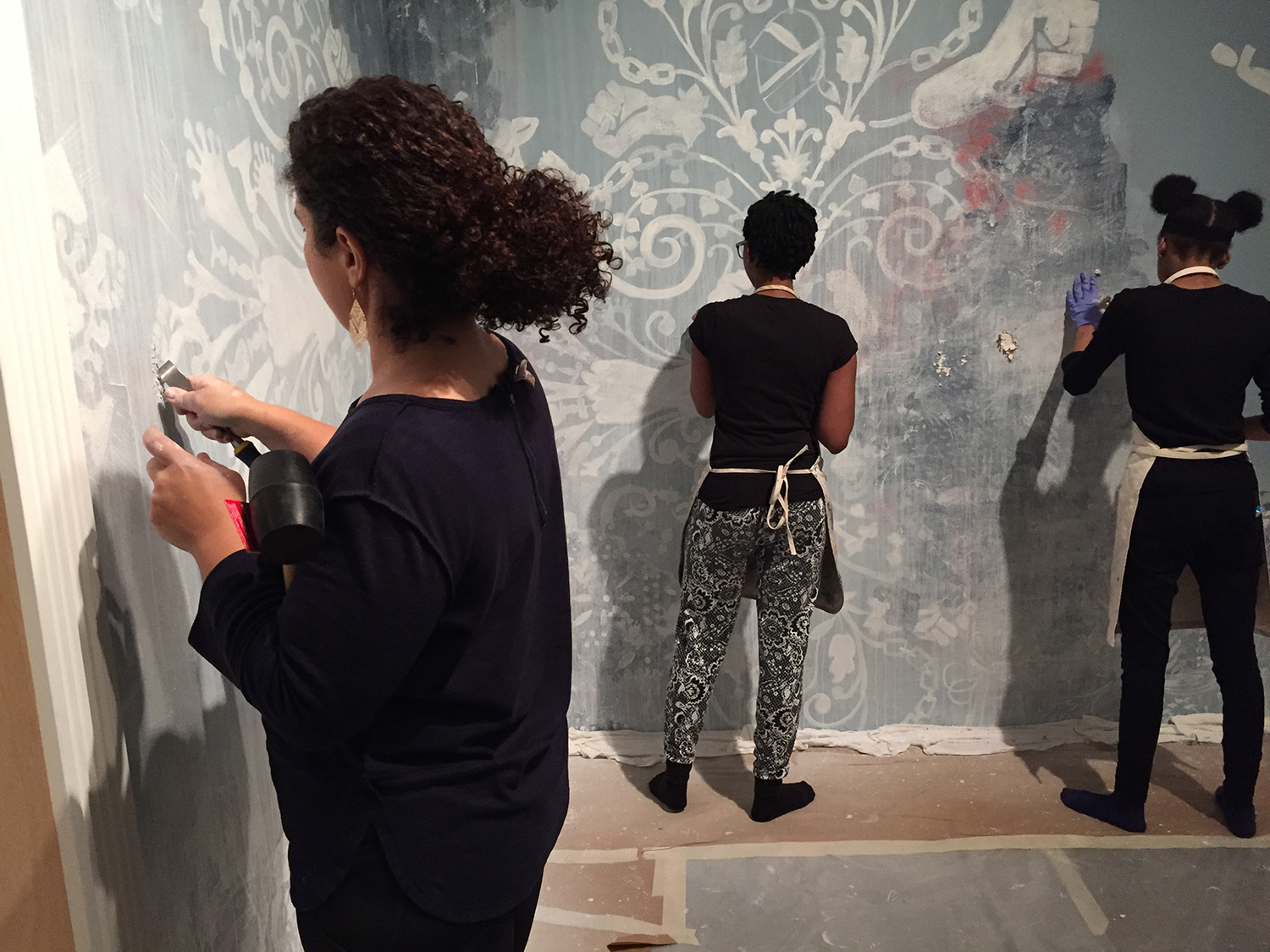 Firelei Baez: Bloodlines Installation, The Andy Warhol Museum, photo Abby Warhola
Firelei Baez: Bloodlines Installation, The Andy Warhol Museum, photo Abby Warhola
Angie Cruz: I’m thrilled that you currently have a solo show at The Warhol. I have been thinking a lot about the invisibility of Latino/a artists in mainstream media and and it’s exciting for Pittsburgh, and for me personally, as a Dominicana, to have you here. In an interview you said that you’ve had the experience of being the first Latina/o or Caribbean artist to present in a museum. Why do you think that is, in 2017?
Firelei Báez: Latino and Caribbean artists have been working within mainstream American institutions all through history. Take Gordon Matta Clark for instance, who was of Chilean descent but is solely cited as an American Artist. It is through the efforts of courageous academics and artists within the last thirty or so years that artist like myself can proudly claim our Caribbean seat at the table. I am the first Caribbeña artist to have a solo show at The Warhol Museum.
AC: You once said that if you went way back, you’d cite Leonardo da Vinci as an influence. But then more contemporarily, you cited Felix Gonzalez-Torres and Ana Mendieta as influences.
FB: We have such a broad lexicon to look onto. Da Vinci’s book of drawings was the first art book I ever saw and that was in my sophomore year of high school. I really love Julie Mehretu’s work, and although there are some amazing male artists, I’ve been trying to make an effort to put focus on at least three women artists who are canonical and who have shifted my idea of art. For me they are Lorna Simpson and Julie Mehretu. I love love the work of Kara Walker, Wangechi Mutu and Simone Leigh. Also writers like Arundhati Roy, Zadie Smith and Julia Alvarez—
AC: What’s interesting about many of the artists you mentioned is that they identify as African-American artists. So for you as a Dominican—
FB: I think generally in the U.S. the younger generation of Dominican artists are more informed by African American art. Many of the Dominican artists in D.R. who were successful, moved to Paris, they looked to Europe and came from a certain class. So as a Dominican raised in the U.S. but who spent my formative years in the D. R., I didn’t grow up with any concept of art. It was through public schooling and after school programs in the U.S. that I was like, oh art is something that people do. I made art all the time–my family is super creative and I would be the one to make paper dolls for the entire neighborhood–so the act of making was always with me, but this idea of becoming an artist, I didn’t have that in D.R.
AC: This was also true for me as a writer. I was greatly informed by slave narratives, and writers like Baldwin and Morrison. When I read them I was like, this is my story too.
FB: Yeah it’s the parallel. It’s like our story is so complex that in choosing to tell it, you have to have a filter. Discourse in the U.S. is–black or white–there isn’t the multivalence you’d have in Latin America. I think it comes in part out of religion. Catholicism allows for all these different threads, syncretism. You can’t have images in Protestant religions for instance, so you need very clear ideas of what is and can’t be. Have you seen casta paintings from Latin America?
AC: No, I haven’t.
FB: They’re these paintings that told their owners who they were to society based on their race mixture to the nth degree. They existed within the Catholic religion and were usually displayed near the home’s altar, with the saints that were meant to be prayed to on a daily basis. In these spaces, people were encouraged to mix, with this goal of being mestizo—a very white blend though. In all of the casta paintings, at every level, you’ll see someone mixing with black. They were supposed to enact a kind of social violence, but at the same time they are some of the first intimate, and very tender portraits of mixed families.
AC: I’m so happy you’re saying this about Protestantism versus Catholic aesthetics, because when I teach books by people of color in particular, some students will say, it’s interesting but I just don’t feel it? And I understand how they feel because that’s how I feel about certain writing in the U.S. that are often celebrated. For years I have been thinking about how our spiritual formation inform our aesthetic leaning and consumption of culture. As a younger writer in the MFA workshop I was often told my work had too many characters, too much drama. But when I read certain works, I think, I need more drama. To me, when I see your visual work I understand a Dominicaness in it. There’s this rich, multi-sensory provocation. I feel it.
FB: Thank you. They don’t know how much restraint we have to put on ourselves to show only a fraction of our experiences. There is so much more to say and this is just the needle’s eye being allowed at this moment. We as immigrants have access to all this information, all these rich complex histories which we have no problem understanding and translating because we’re used to seeing ourselves as Other, and Other in ourselves.
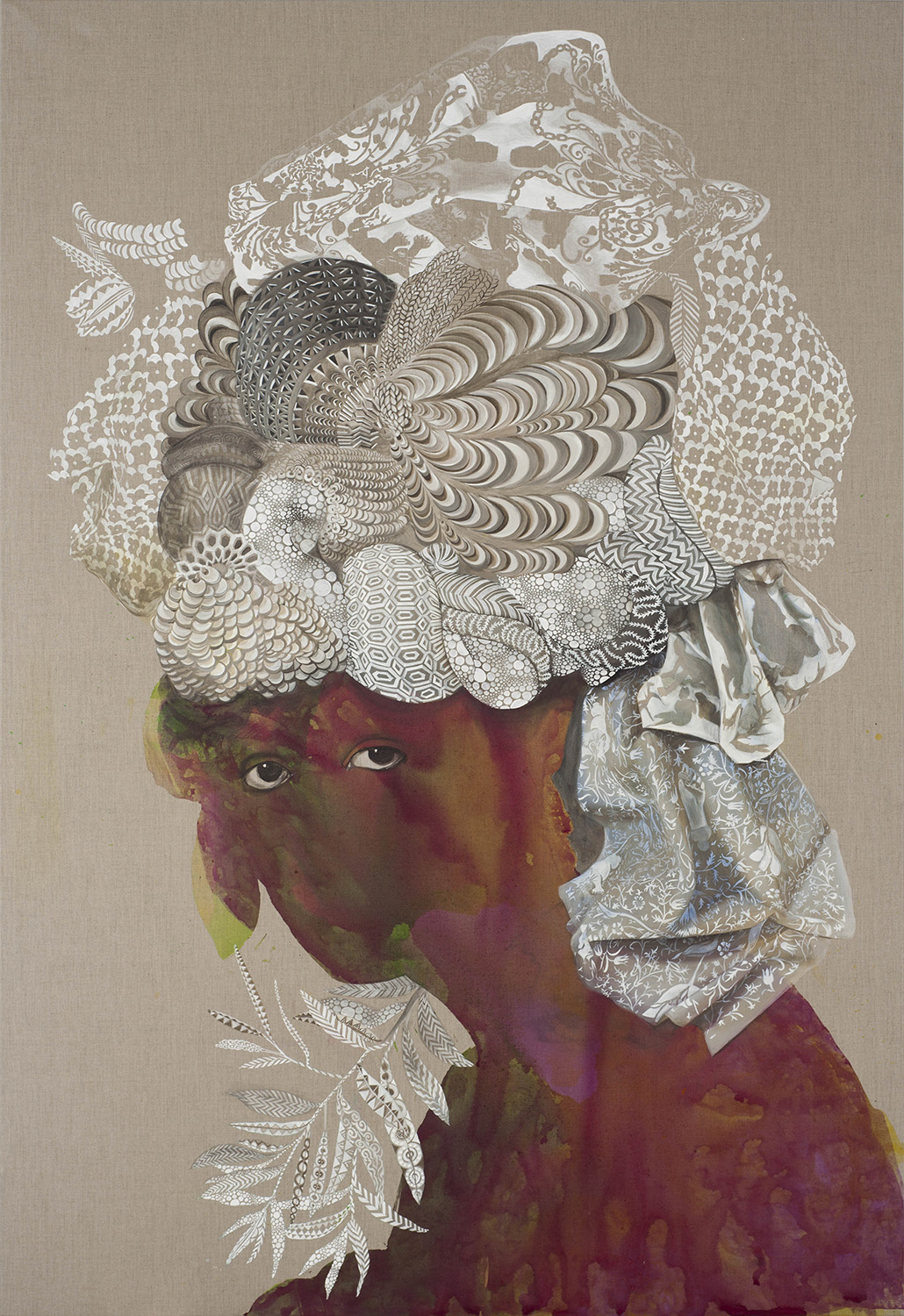
AC: I feel like there’s definitely a lot of momentum for African American art and literature right now in the U.S.. How do you feel about the reception for works from the Spanish-speaking Caribbean?
FB: It’s funny, I’m a Dominican citizen, but I was raised here. My accent’s American, my sense of the world is American, a lot of the work I’ve made wouldn’t have been made if I’d been raised in the Dominican Republic. My work addresses race and class and in D.R. they would be like, what’s wrong with your brain? Why are you speaking about these issues? Because they think that they don’t exist or are addressed differently. I exist as a bridge. In this in-between space. Right now, I’m either Latin American or I’m American. The art collections are built around those two identity politics. So someone like me has to choose a camp. There’s no space for that in-between.
AC: The borderland.
FB: Exactly. With the Latinx movement, it’s the idea of valuing that space, of making it a valid voice with concrete weight. But right now I either have to be Latin American or Black. If I show too much at Studio Museum in Harlem then El Museo del Barrio resents it.
AC: Really?
FB: I’ve experienced that. They’ll be like, oh she’s all black now. Oh no, she’s all Latina. You can’t be enough of this or enough of that. The black diaspora is bigger than the United States. Take Brazil or even the island of Martinique. That tiny Caribbean island had more African slaves brought there than the entirety of the U.S. before the Louisiana Purchase. We in the African diaspora share a range of similar experiences, perhaps to a greater degree outside the United States. Conversations around race in the U.S. are so didactic, you’re either one or the other. This in part drove, in my opinion, the clarity of the discourse and policies of the Civil Rights movement. In romance language-speaking spaces, like Brazil and Latin America, race is always addressed in terms of mestizaje, supposedly never prizing one race over the other, but in all honesty pushing for a more European ending.
AC: What about U.S. Latino/a art? Where does it fit?
FB: What’s held as the canon of Latin American art is usually very European modernism. In every sphere, you’re following this very specific European model, and usually the people who are showing in that are of a certain class. There’s an artist now, Carmen Herrera for instance, she’s a Cuban woman artist who got her first Whitney biennial at almost a hundred years old. Where is she being placed now? Think about the fact that she went to Paris in her twenties, and spent about eighty percent of her life in the U.S. Anyone reading through this would be like, she’s Latinx, she’s a Latina, she’s Cuban-born but spent most of her life here in the U.S.. She is being positioned within high modernism in Brazil. With artists like Lygia Clark and Hélio Oiticica. That’s how they can find value in her work. There was latino/a work being done even before the WPA, and hopefully that work will be written about differently.
AC: In the book industry many people collapse latino/a and latin American books in the same lists. Often time the books are translations. In some ways it creates less visibility to the dearth of U.S. Latino/a narratives and still fuel the idea that we are foreigners. Don’t you think?
FB: In a recent news cast there was a segment on immigration. During the caller segment a man asked “how are they vetting Puerto Ricans?” And the person taking the calls was like, you do realize they’re American citizens? We don’t prevent someone from Iowa coming to the main city, or someone from Hawai coming here. But this idea, because there’s a different language being spoken perhaps, that you don’t belong, or you’re something that should be filtered out, is very heartbreaking.
AC: So you grew up in the Dajabon which is the border city between Dominican Republic and Haiti, loaded with a troubling history and also now very contentious. How has growing up in a space where there is a stark difference between the lush green environment of the Dominican Republic and then the deforested landscape of Haiti, has informed your work?
FB: Ok, so think of the French Enlightenment, the Empire, Parisian opulence: the money that fueled all of that was coming out of indigo and sugar from the colony of Saint- Domingue and Martinique. So that lush landscape we have in DR, that fertile soil, is all in Haiti as well. They were still paying billions of dollars in debt to France into the twentieth century for their independence. When Trujillo was doing the Massacre, they [Haiti] were still having to pay a huge embargo for their independence. I didn’t even know this was possible until I was doing research on the palace of Sans Souci, near Cap Haitian. Dominican Republic paid a similar independence debt to Spain as well but slowly, while still being part of a global commerce. It’s incredible that not only do you have this war, where you shed blood and tears, but then the legality of it is that to get back into world trade, you have to pay monetarily for your freedom.
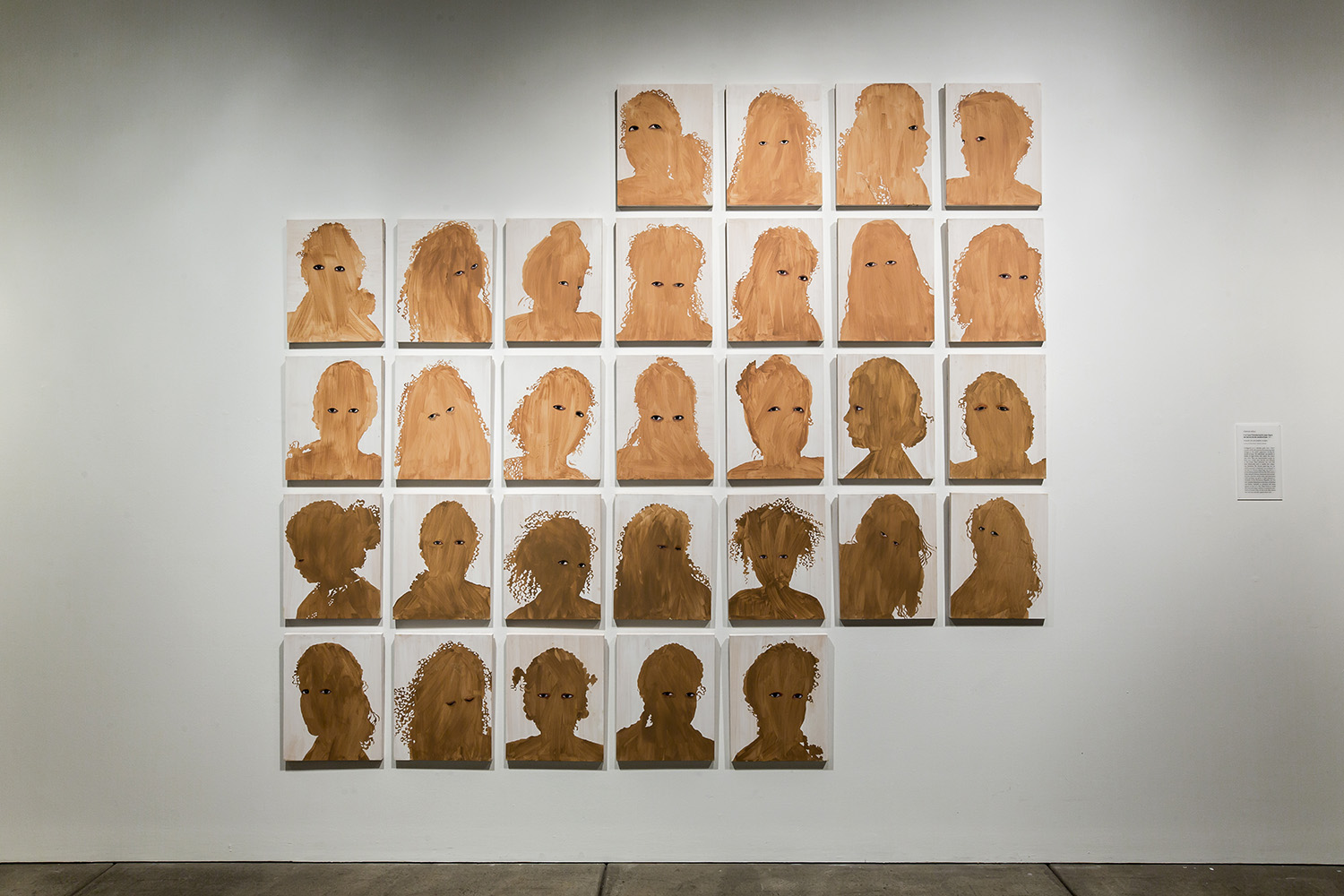
AC: So we know all these things intellectually but I’m curious: one of your works that I find very provocative is the Paper Bag Test, for example. I love how the eyes come in–they cross the border of the Paper Bag Test. It’s very haunting to look at the work.
FB: I wanted the viewer to come to terms with there being a human being behind all that.
AC: Skin comes up a lot in your work, projections of nature and the outside onto the skin. Why skin?
FB: So, it’s not so much about skin itself but rather ideas around the body. Or ideas around what forms how we treat land and body. You can usually see this in how I position the figure in my work. Usually, if a figure is in a white ground, sort of just isolated on a picture, on a plane, it’s referencing things like Carl Linnaeus’s taxonomy. Which was first developed as a way for humans to ‘factually’ tally the living beings and plants around them; but instead allowed for horrible things to be done to people and nature outside of Europe. The Dutch believe there were cannibals and vampires along with beavers and moose in the new world for instance. It’s more of the body as a specimen that can be explored in order to reveal something of the viewer in the process. Any of my Ciguapa paintings would be an example of this. They are usually very physical, heavy seeming figures that fuse with landscape.
If the figure has a ground, then it is more about creating this void or space that diffuses the weight of the body. The surrounding color voids all that physicality and gets closer to spirit for me, to a psychological interiority. These near abstractions act like Rorschach’s where the viewer projects themselves onto the picture. It is perhaps more freeing and intimate for me in the studio.
AC: Historically, skin has always been like the container, the separation from the outside world, but now we understand that skin is the communicator, the interface. Even the way we think about skin has changed so much. Also, thinking about communicating the projection, not just of other people but of nature, and in some ways it gives agency to nature.
FB: I completely agree. Some experiences as a kid really gave me a concrete understanding of that. When I was a kid I was told to control how I shed my hair, and for me it seemed so strange because it’s very much like European witchcraft or voodoo, melding of East and West. Every part of your physical self is tied to your spirit, or who you are. So one of the biggest warnings was that if my hair was taken by a bird, I’d be stuck in limbo, because they exist between heaven and earth. And that would be the worst scenario, because you would have no agency whatsoever. You’d lose control of your body.
AC: I love that.
FB: As a little girl, I was taught to be beholden to nature. To think of it as something with immense power that can control you. But coming to the States, the birds are grooming princesses on TV. These humans are masters of everything in their environment. Coming from the Dominican Republic I was like ‘listen girl, you’re in danger!, your body and your soul are tied together, and if anything takes it, your control is gone.
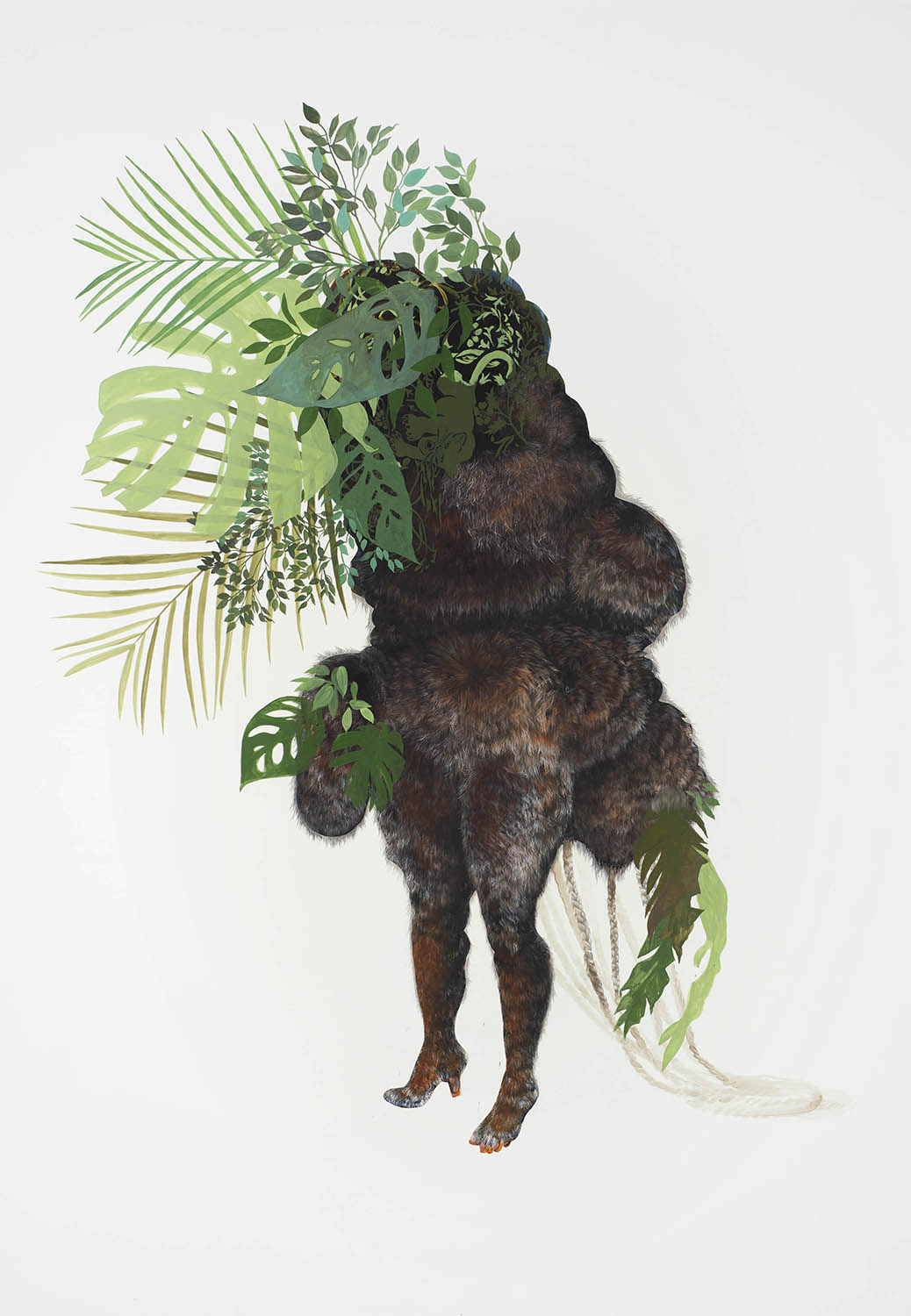
AC: So you were in Miami when you decided to go to Cooper Union. Your family was good with that decision?
FB: They never were. I think they’re coming to terms with it now because I’m doing things.
AC: You’re very successful!
FB: But even now they’re just like, ok maybe. They’re like: you need health insurance, you need to have a husband, this many kids, you need to have a home, you need to have this car, and then we’ll see if you’re successful.
AC: So what do you think about this precarious moment for artists. Trump threats to cut NEA funding but also we’re in a hyper-professionalized moment where if you’re not a professional you kind of die, you know? I also like something that Angela Davis said about how our imaginations have been privatized, right? And thinking about what does that do to art?
FB: Here’s the thing though. As a child of an immigrant, I knew to juggle several balls at the same time. So I know if this doesn’t work…when I was in college I had five jobs sometimes. I can do anything.
AC: But what do you think the role of artists and writers is right now?
FB: Well, because art is being hyper-professionalized, it can create a certain rigidity in how you respond. And, yes ok we deserve to have quality of life, and maybe that’s the biggest push toward professionalizing. If you are working for someone you shouldn’t do it for free. But at the same time, there’s more people working for free for institutions. Or art is being used as a band-aid to help the things that social policy isn’t actually working on.
AC: Over the years I have seen some of my favorite museums move toward edutainment. I worked as a teaching artists at museum for years. And it was a great gig but I also think why are artists dropping into schools for a day? Schools should be creating dynamic curriculum where art is an everyday thing.
FB: But also, often art programs, directed to black and brown kids are geared toward how to improve their health, how to keep them from doing any crimes, how to make them not get pregnant. It’s like it’s never about art for itself and expressing their creativity. Art can help you break out of that confine and think bigger than where you’re coming from.
AC: So in this moment, you’re not terribly terrified for yourself or the world?
FB: Oh I am. I’m like, oh my god we’re in the beginning of a dark age. What are we gonna do? But because– when I was growing up we’d spend summers with my grandmother and aunt who were Seventh Day Adventists, and for them, at the turn of the 20th century they were like, the world is gonna end! They’ve all been on rapture-wait mode for the past hundred years. Any time now, any time now! So even at the beginning of 2000 I was like, well we got two years! Just get ready. And when the world didn’t end in 2000 I breathed a little and then I was like ok there’s a future, let me start doing things that can help. Even though I have not been religious since I was twelve, that is still the mindset: be ready.
AC: For you, what were some of the main challenges as an artist?
FB: The roughest parts are not knowing where your income is going to be. Having to move several times. I went to a different school every year since I was in the first grade. I’ve just been ready for whatever comes. Just not being afraid of hard work. Which is a mindset you have to get out of after a certain point. Cause if you’re on survival mode…it’s like Maslow’s Hierarchy of Needs. Yes, working your heart out helps you survive to a certain point but in order to really thrive you have to move beyond that and get to this point of, alright, well I belong in this space.
AC: Do you remember that moment?
FB: I might be just starting now. To go beyond survival. What would I do if I had to go beyond survival? What would I start expecting? What should I start establishing? I don’t think I’m there yet. I probably need five more years of continuous feedback to feel like, ok, what’s next?
AC: This is always a difficult question for me but I’m going to ask it to you anyway. Who is your ideal audience? And who do you think you’re seeking feedback from?
FB: Originally, and I’ve said this many times: I made work for my mom and my sisters. For people who share a similar history to mine. And if that history happens to strike a chord in someone who has a different experience, then that’s great. I’m always a little shocked and really happy when I’ve shown work in like Utah and Nevada, and there’s still a chord, excitement. Because the histories I’m introducing to them are not familiar to a lot of people and sometimes not even to Dominicans themselves. If you give enough of a roadmap then many people might be excited to go and read more on it. So a woman of color is usually in my ideal audience.
AC: But if I look at your work without knowing the history, I would actually think, I really love the way that body is moving, for example. Or I’ll be curious about why there’s something happening in a certain way. I wouldn’t necessarily know the history. So how do you communicate, like in your mind when you’re communicating do you think like, I’m communicating it through beauty? Linguistically I’m just interested in…
FB: Well there’s a visual seduction that happens, and then the sting, if you are actually generous enough to keep looking. I’m asking a lot of the viewer. And usually I want them to make it as much as I am. To meet me at a halfway point. I’ll give enough for you to start creating the narrative. And a lot of people come in with their own histories. Especially if you’re coming from another country. Folklore is a place that has so much overlap globally because we go through similar things no matter where you’re coming from. So even when I’m talking about a Ciguapa from Hispaniola, there’s a trickster figure that’s extremely similar to it in Brazil, India or Ghana.
AC: I have two more questions. My first question is, if you had the ear of Trump for like two minutes and you asked him to look at three works—
FB: I don’t think that’s going to help. I would do this: I would take a course in hypnotism, I would go deep in that, and for those two minutes I would try to hypnotize him, the visuals could be anything, a Rauschenberg for instance.
AC: Are there any things that you think would help him see?
FB: I think the only thing that would help him to see would be to have his body be our body. The reason he doesn’t see is because he doesn’t need to see. His body, his children, the things he cares about are protected within his actions. Even if you see the women in his family collapse in front of him, publically, there’s that clip of just both their faces like melting as he turns around, they are protected. I would use my hypnotism skills in those two minutes, to tell him ‘you are a woman of color’.
AC: But what about works that you have found incredibly transformational to yourself? Or have helped you re-see something? Could you name a work?
FB: Lorna Simpson’s, Seven Day Weather Forecast. Or Kara Walker’s Diorama Gone: An Historical Romance. Or Goya’s, Terrors. Or the mural of the buddha at the Met–like going to a temple and seeing the human intent behind them. You see this reach for something beyond the body, beyond our present existence. Agnes Martin’s rooms that are like chapels, you know? It’s like this reach towards spirit, always. They’re anchored in physical space but there’s always a reach for something greater. But I don’t think any of these ephemeral things would work with Trump.
AC: So my other question is–and I didn’t even ask you what you’re planning to work on for this show, which I need to ask you because it’s important! But before that, what are some young artists that you’re excited to see kind of blow up, that you want to namedrop right now?
FB: I’m working with some of them in this show in Ukraine. Dineo Seshee Bopape, Phoebe Boswell and Martine Syms do incredible work. And Kenny Rivero is a Dominicano around my age who makes the most sublime paintings.
AC: So what are you working on here at the Warhol?
FB: So here, we’re basically continuing the premise of the Perez Exhibition–Bloodlines. Which formally traced social movements within the black diaspora in the entirety of the New World. Seeing how actions in North America, like the Harlem Renaissance or the Black Power Movement were all in conversation with movements that were happening in the Caribbean. And even if you think of North African revolutions, they were also being informed by Caribbean theory. So making concrete and obvious those interactions, down to a formal level, connecting the black power fist, the socialist fist with the figa or el azabache. At the same time as the Perez Museum of Art in Miami show there was a sister exhibition at the Utah Museum of Contemporary Art that was titled Patterns of Resistance, and this exhibition at The Warhol will be a a melding of those two.
If you are in Pittsburgh, don’t miss the opportunity to visit the show at The Andy Warhol Museum until May 21, 2017.
Firelei Báez: Bloodlines is organized by Pérez Art Museum Miami Assistant Curator María Elena Ortiz. The Pittsburgh presentation is coordinated by Jessica Beck, The Warhol’s associate curator of art.
EDITOR’S NOTE: This was originally published on July 6, 2017 but has been reposted in June 2023 for the 10th Anniversary Issues.
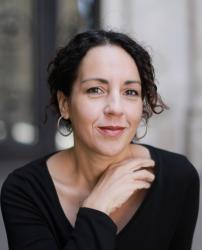
Angie Cruz's novel, DOMINICANA is the inaugural bookpick for GMA book club, and the Wordup Uptown Reads selection for 2019. It was also longlisted for the Andrew Carnegie award in excellence in fiction for 2019. It was named most anticipated/ best book in 2019 by Time, Newsweek, People, Oprah Magazine, The Washington Post, The New York Times, and Esquire. Cruz is the author of two other novels, Soledad and Let It Rain Coffee. She's the founder and Editor-in-chief of the award winning literary journal, Aster(ix)and an Associate professor at University of Pittsburgh where she teaches in the MFA program. She splits her time between Pittsburgh, New York, and Turin.






